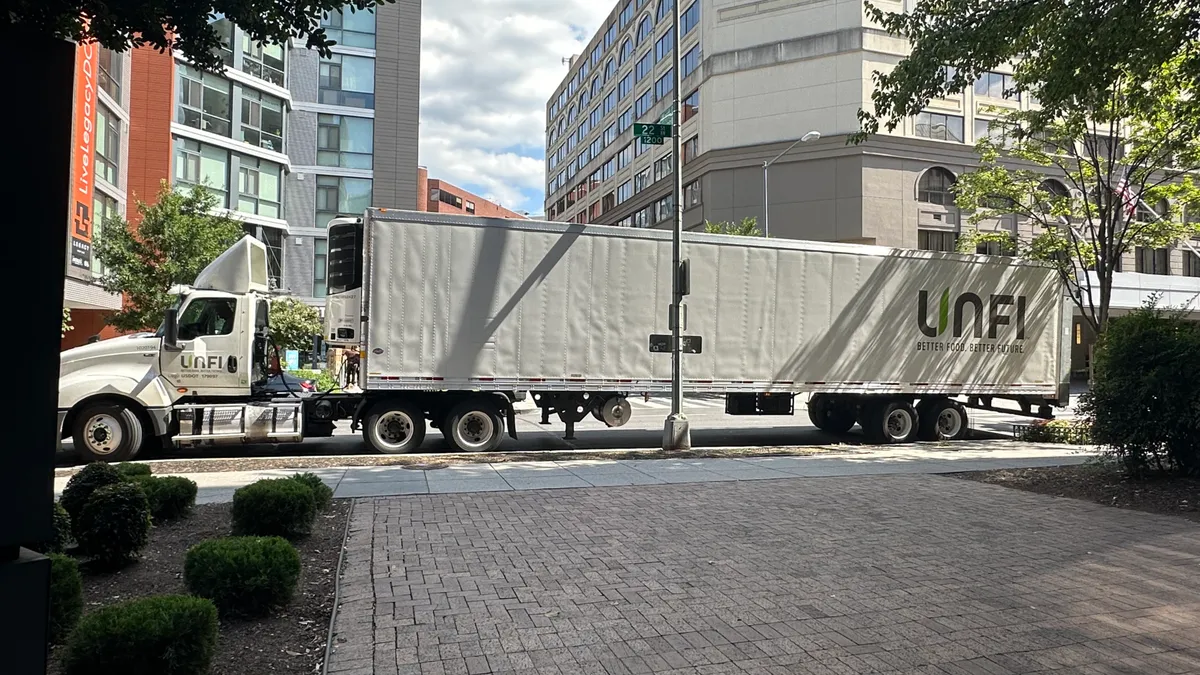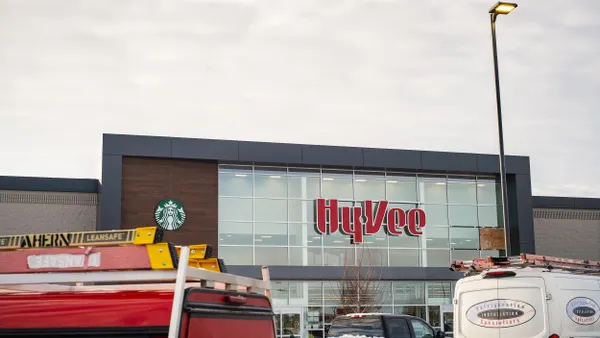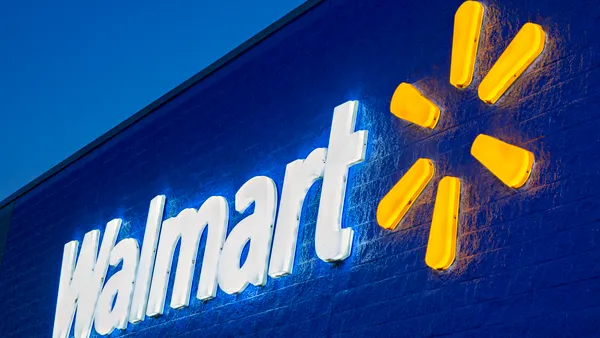Dive Brief:
- After building its largest solar array to date in 2023, United Natural Foods, Inc. is gearing up to start constructing an even larger solar installation at a distribution center in fiscal year 2024, according to the company’s latest Environmental, Social and Governance report.
- Other efforts for FY2024 also include launching a program to help farmers transition to regenerative agriculture and implementing digital communication screen technology at all of its distribution centers, per the report.
- UNFI’s Better for All strategy consists of nine focus areas and builds on the transformation plan the company implemented earlier this year.
Dive Insight:
The report, which was released in mid-December, details UNFI’s milestones from FY2023, which ended July 29, as well as future goals as part of its Better for All strategy, which the company unveiled in January 2021, to benefit the planet, society and the food industry.
In April 2023, UNFI completed its eighth and largest solar array installation at a distribution center in Howell, New Jersey. In FY2024, the company anticipates beginning construction on another, bigger solar array at a distribution center in Riverside, California. UNFI is also exploring opportunities to develop on-site solar in other locations given the “strong environmental and financial return on these projects,” per the report.
Along with solar projects, UNFI is also adding new technology to its facilities. Digital communication screen technology, which UNFI started implementing in 2023, is slated to be introduced to every distribution center throughout FY2024. The technology helps improve communication between the regional communications team and distribution centers as well as lessens the need for paper, shares important content and allows associates to interact with “topics that interest them,” according to the report.
FY2023 saw UNFI begin a formal partnership with Mad Agriculture (Mad Ag) to develop a pilot program designed to assist farmers in transitioning to regenerative agriculture. The program will address operational and business development concerns farmers may encounter when making the switch.
In FY2024, UNFI plans to launch the Mad Ag program on an invite-only basis. This initiative is part of UNFI’s larger goal of promoting soil health through regenerative and organic practices on 1 million acres by 2030, but the company noted it is “a bit behind” — having only reached around 21,500 total acres of organic farmland since 2021.
Another land-focused initiative the company introduced in FY2023 was its formal policy designed to support its goal of zero deforestation across its “primary deforestation-linked commodities” by 2025. UNFI plans to collaborate with third-party organizations to improve traceability as well as data quality, and connect with suppliers to help them address barriers, the report noted.
Food waste is another focal point of UNFI’s Better for All report will numerous goals touching on this area, including donating 250 million pounds of food by 2030 and achieving zero waste to landfills from distribution centers by 2030, which UNFI is “on track” to completing.
To help meet its goal of reducing food waste from distribution centers by 50% by the end of FY2025, UNFI rolled out in FY2023 a Reverse Logistics Disposition Reporting system that allows for greater inventory visibility. The technology enables distribution centers to track, monitor and create reports that reflect where a product ends up when it hasn’t been sold through a regular purchase order for a customer.
UNFI noted that the system has filled gaps in its data related to salvage and donations, leading to an increase in food waste metrics in FY2023 with expectations of that trend continuing in FY2024.
“In the coming year, we are going to focus on gaining an additional level of granularity in our data to differentiate between product and packaging weights, and further clarify food donations and non-food product donations,” UNFI said in the report.












